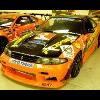Z32 Igniton Dwell Duty
Announcements
-
Similar Content
-
Latest Posts
-
Take the value it measured as, and pick the closest range available that is above the reading on the screen. Also, no point just testing the coils. Read what has been said again. You need to test all your wiring, everything.
-
Does the scanner do all the CUs in the car, or only the ECU?
-
@666DAN sorry to bring you and old thread. I've got my de+t done and it's all running great other than 1 small issue. Car has remained auto with the na auto and tcm, I've used a stagea ecu with. NIstune board and everything is great other than my gear selection on the dash. It illuminates park, reverse, neutral, 3rd and 2nd when selected . But nothing when in drive or what gear your in when you pop it into tiptronic. I'm sure there is maybe 1 wire in the ecu plug I need to move to rectify this. Do ya have any ideas? Cheers man
-
By RB25inside · Posted
Well I recently changed my rear axles and was thinking if I bumped anything, I have been driving the car for a while now though... But it has been raining today so everything is wet under the wheel arches. Brakes feel fine and can't hear any of the metal screamers, I had a squeak coming from one of the handbrake drums but that seems to have gone away a while ago. I was going down a hill when it lit up and I did feel the abs bite for a second and question why it did it? -
Correct. Um. I dunno. I haven't cared enough about the way that the NA cars work to know for sure. But..... The 33/34 turbo manual cars have an electronic speed sensor in the gearbox that outputs a +/- (ie, sawtooth AC) voltage signal. That is connected to the speedo. The speedo then outputs a 0-5v square wave (ie, PWM) signal that the ECU (and any other CU on the bus) sees. The speed sensor is NOT directly connected to the ECU. So here's the problem. Your new ECU expects to see the PWM signal, but must somehow be getting a direct signal from the diff speed sensor. Which would suggest that the wiring of the NA car is not the same as the turbo cars. I think you will need to spend some time with (hopefully the wiring diagram for the car) and a multimeter to see what is connected to what. Then, presuming I am correct**, you would then want to separate the ECU speed signal input from the rest of the car's wiring, and probably either buy a speed signal converter, or build one using an arduino (or similar). That would take in the speed sensor signal and output a scaled (and suitably rearranged) signal for the ECU. ** We shouldn't presume that I am correct here, because there might be something else crazy going on. I don't think you could convert the speedo to be fed from the gearbox sensor, because the pulse rate from that sensor is probably different to the diff sensor and then the speedo would read wrongly. And this also wouldn't fix the ECU's problem either, because the ECU doesn't want to see the gearbox signal direct either (assuming that they are all on the same wiring, for some odd NA related reason, see above caveat!) Does this help? Probably not. Can you make it work? Almost certainly. With the above work. You should buy a handheld oscilloscope from Aliexpress so that you can view these signals directly. Connect up the probes and drive the car. Show photos of the screen when drving at known speeds and connected to different places, and we'll see what we can learn about it.
-




Recommended Posts
Create an account or sign in to comment
You need to be a member in order to leave a comment
Create an account
Sign up for a new account in our community. It's easy!
Register a new accountSign in
Already have an account? Sign in here.
Sign In Now